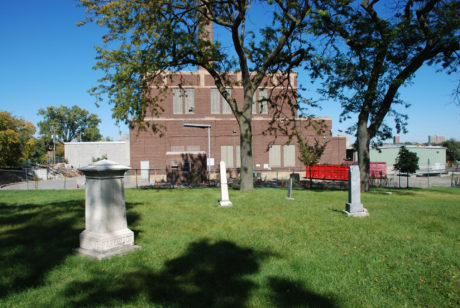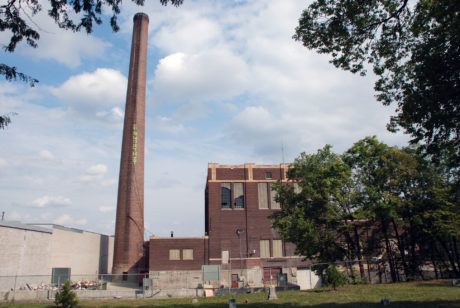

By SUE HUNTER WEIR
208th in a Series
In the summer of 1938, no one denied that Minneapolis needed a new incinerator to deal with its overabundance of garbage. The problem was not new: the debate about where to locate the incinerator had already dragged on for ten years and there was no solution in sight. Untreated garbage was piling up, creating a health hazard.
From the beginning, the City of Minneapolis Engineer’s Office had favored what was referred to as “the so-called Layman’s site” (by that time, the cemetery was officially Minneapolis Pioneers and Soldiers Memorial Cemetery). But there was significant opposition from people who lived near the proposed site and they had the support of a handful of city council members, members of the Board of Estimate and Taxation, Mayor George Leach, and the South Side Protective Committee, a coalition of neighbors, patriotic and civic organizations, including the Minneapolis Cemetery Protective Association.
The wrangling began in earnest in March 1938 and continued throughout the summer. Herbert Finseth and John A Nelson, the two city council members representing the ward that included the cemetery, warned their colleagues on the council that some of their constituents would seek an injunction to prevent having the incinerator built in their community. The City Council’s five-member Sanitation Committee had issued a majority report that favored a different site, on land that the city already owned on the West Bank near 20th Avenue and the Mississippi River. On April 8, 1938, the City Council gave tentative approval to their choice but was then faced with vigorous opposition from the University of Minnesota and St. Mary’s Hospital. In late May, still hoping to find a satisfactory solution, the City Council created an ad hoc committee composed of one member from each of the city’s 13 wards. The committee selected Layman’s as the best choice, and the City Council accepted their recommendation reversing their earlier support for the West Bank location.
But things didn’t stop there. The Board of Estimate and Taxation was the only body with the authority to authorize the sale of bonds to pay for the new incinerator and they were firmly opposed to the Layman’s site. At their June 16th meeting, which was attended by 300 residents, they unanimously voted against authorizing the sale of bonds, a move that the Board’s chair claimed would “kill for all time” the building of an incinerator in South Minneapolis. Curiously, the motion to deny was put forward not by a Board member but by the Mayor, who had previously gone on the record saying that South Minneapolis was “…overly blest [sic] by a concentration of city equipment, operations and supplies in the large city maintenance yard located approximately in the middle of it.”
Several city council members were of the opinion that the Board of Estimate and Taxation had overstepped its bounds and came up with the idea of using $125,000 from the city’s operating budget instead. Not one to mince words, City Council Member Finseth called their proposal “conniving and trickery.” Nonetheless, the City Attorney ruled that the City Council had the authority to do so.
On August 11, 1938, the night before the Council was scheduled to vote on the appropriation, hundreds of people, some in favor, others opposed, met at the old South High. At one point the meeting “got out of hand” as those in attendance debated the merits of the chosen site and the proposal about how to pay for it. The next day, many of those people attended the City Council meeting. The South Side Protective Committee had set aside their plans to take legal action against the city. They were convinced “that if the majority of the city council realizes the injustices that will be done, and the feeling of the citizens in the effected [sic] area, it will see its way clear to remedy the situation.” Their hope was misplaced. The council voted in favor of the appropriation on a vote of 17-6.
Two months later the City Council voted to allow construction to begin, and by December 1938, excavation was already underway. In May 1939, construction began, and in October, only five months later, the building was complete, and the City Council held a “celebratory lunch” at the plant. After ten years of acrimonious debate and staunch opposition, the incinerator was open for business.
Eighty-four years later, the plant remains a part of South Minneapolis’ landscape. It currently functions as the South Side Transfer Station. The 180-foot-high smokestack has been inoperable since 1971. Today, it is home to a red-tailed hawk.
Sue Hunter Weir is chair of Friends of the Cemetery, an organization dedicated to preserving and maintaining Minneapolis Pioneers and Soldiers Cemetery. She has lived in Phillips for almost 50 years and loves living in such a historic community.









